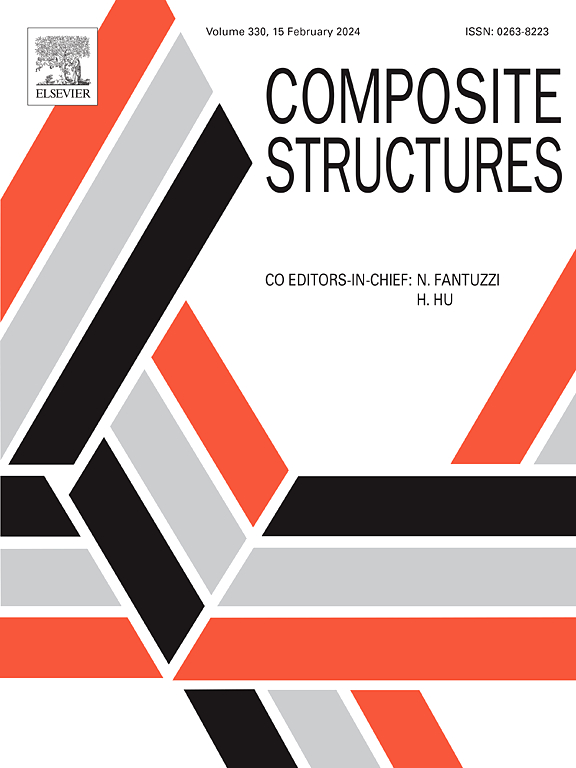机器学习用于对齐随机纳米碳管增强导电纳米复合材料中的纳米级缺陷检测
IF 6.3
2区 材料科学
Q1 MATERIALS SCIENCE, COMPOSITES
引用次数: 0
摘要
通过机器学习可以快速检测聚合物浸渍对齐碳纳米管(CNT)纳米复合材料中的纳米级缺陷。通过 TEM 验证的几何形状填充了数字孪晶;考虑的缺陷为平面裂缝和近似球形的空隙。通过将 CNT 网络嵌入基体,对压阻响应进行了有限元分析。通过 CNT 网络压阻系数的变化来识别缺陷面临以下挑战:(1) CNT 的形状和位置具有随机性,ML 训练是在随机现实中进行的;(2) CNT 的高强度导致沿 CNT 的导电路径得以保留,仅隧道接触的电导率发生变化。引入了 "人工近似",以成倍地节省计算机时间:在缺陷内隧道传导性人为降低的情况下进行 ML 训练。三种 ML 模型:采用了 XGBoost、全连接和卷积神经网络。对于近球形空洞,所有模型都能完成任务,但对于平面裂缝,由于裂缝体积中隧道接触的数量有限,因此表现不佳。当在空洞和裂缝混合集上进行训练时,两种神经网络都表现出了学习差异的能力,并能检测出均匀的裂缝,而 XGBoost 则无法应对挑战。从指标来看,卷积神经网络的预测准确率最高。本文章由计算机程序翻译,如有差异,请以英文原文为准。
Machine learning for nano-level defect detection in aligned random carbon nanotubes-reinforced electrically conductive nanocomposite
Machine learning allows fast nano-scale defect detection in polymer-impregnated aligned carbon nanotube (CNT) nanocomposites. Digital twins were populated by TEM-validated geometry; considered defects were flat cracks and close-to-spherical voids. Finite-element analysis of piezoresistive response was conducted by embedment of CNT network into matrix. Identification of a defect by change in CNT network piezoresistivity was challenged by: (1) randomness of CNTs’ shapes and placement, ML training happened on random realisations; (2) high strength of CNTs leading to the preservation of conductive paths along CNTs and changes only in conductivities of tunnelling contacts. “Artificial approximation“ was introduced to economise computer time multi-fold: ML was trained on cases with artificially degraded tunnelling conductivities within the defect. Three ML models: XGBoost, fully connected, and convolution neural networks were employed. All models managed the task for near-spherical voids, but performed poorly for flat cracks, due to the limited number of tunnelling contacts in crack volume. When trained on the mixed set of voids and cracks, both neural networks demonstrated the ability to learn the difference and detected even cracks, while XGBoost was not up to the challenge. By metrics, the convolutional neural network demonstrated the highest accuracy of predictions.
求助全文
通过发布文献求助,成功后即可免费获取论文全文。
去求助
来源期刊

Composite Structures
工程技术-材料科学:复合
CiteScore
12.00
自引率
12.70%
发文量
1246
审稿时长
78 days
期刊介绍:
The past few decades have seen outstanding advances in the use of composite materials in structural applications. There can be little doubt that, within engineering circles, composites have revolutionised traditional design concepts and made possible an unparalleled range of new and exciting possibilities as viable materials for construction. Composite Structures, an International Journal, disseminates knowledge between users, manufacturers, designers and researchers involved in structures or structural components manufactured using composite materials.
The journal publishes papers which contribute to knowledge in the use of composite materials in engineering structures. Papers deal with design, research and development studies, experimental investigations, theoretical analysis and fabrication techniques relevant to the application of composites in load-bearing components for assemblies, ranging from individual components such as plates and shells to complete composite structures.
 求助内容:
求助内容: 应助结果提醒方式:
应助结果提醒方式:


